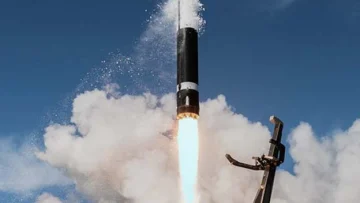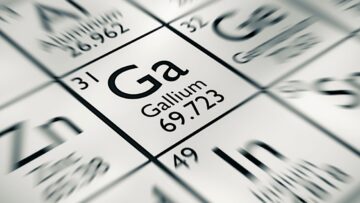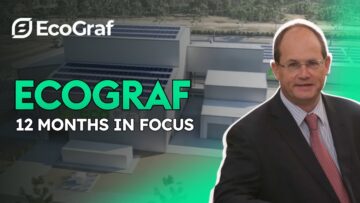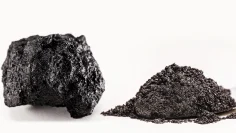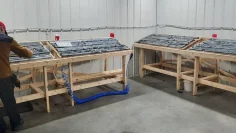Québec and Ontario could become an important part of the success of the energy transition
The energy transition can only succeed if, firstly, a competitive and affordable technology is available and, secondly, the raw materials required for this technology are available in sufficient quantity and quality. If one of these two prerequisites is lacking, the ambitious plans are inevitably doomed to failure.
This makes commodity security a key criterion. Many investors are not yet really aware of this, because in the past, commodities were never really in short supply over a longer period of time. There were short-term shortages, but the basic security of supply was never out of the question.
This is different today, as the energy transition not only requires more raw materials, but also in quantities for which the mining industry is not yet really prepared. There is also the aspect that massive dependencies on individual countries, such as China or Russia, are no longer politically desirable.
The Canadian provinces of Québec and Ontario could become an important part of the success of the energy transition for the West
For the West, security of supply of lithium, for example, not only means reducing dependence on China, but also becoming less dependent on lithium producers from South America. It is therefore not surprising that, in addition to Australian deposits, lithium deposits in the Canadian provinces of Québec and Ontario in particular have increasingly come to the fore in recent years.
The who’s who of future lithium producers are now gathering here. Sayona Mining and Piedmont Lithium commissioned the North American Lithium Project in Quebec in spring 2023. Sayona was also able to carry out initial feasibility studies for the Authier and Moblan projects in the same province, thereby reaching a decisive milestone on the path from exploration to production.
Allkem is working on the James Bay project in Québec, while Critical Elements Lithium is focusing on the Rose project. Livent is represented in the province with its Whabouchi project and Vision Lithium with the Sirmac property. A similarly high concentration of exploration and mining activities in the lithium sector can be observed in Ontario. Rock Tech Lithium is represented here with its Georgia Lake project, Frontier Lithium with its PAK project and Green Technology Metals with its Seymour project.
The development of Canada’s lithium deposits has only just begun
The list is long and therefore somewhat confusing for potential investors, as the data provider Mining Intelligence listed 409 active lithium projects in Canada last year, including 306 in the two provinces of Québec and Ontario alone. In 99 percent of cases, they are operated by Canadian or Australian companies and are therefore also projects that are relatively easy for European investors to invest in.
Most projects are not yet very advanced. Although notable progress has been made on 106 of the 409 Canadian lithium projects in recent months, only 15 projects already have an initial study on the economic viability of the project. Further feasibility studies are also not yet available in large numbers and only two projects have already crossed the threshold to production.
Lithium supply is a mega project that will also benefit numerous smaller players
Many commodity investors’ alarm bells will ring at this point, as an early stage of project development is always associated with a high opportunity, but also with a correspondingly high risk. In the case of lithium, however, the boom is based on tangible economic expectations, as anyone who manages to bring a project into production can virtually choose their customers.
Car manufacturers and battery cell producers are desperately looking for the lithium they need and are therefore prepared to commit to potential producers and those who want to become producers long before the actual start of production. This means that even those projects that require more time have a good chance of successfully going into production at a later date.
Last year, the International Energy Agency (IEA) estimated that lithium demand could rise to 461,000 tonnes by 2030 if major decarbonization efforts continue. Ten years later, demand could already have risen to 1,160,000 tons. What this means for producers becomes clear when you remember that lithium demand was only 74,000 tons in 2020.
Phosphoric acid and first phosphates: not lithium, but inextricably linked to it
Projects for critical raw materials that are essential to the battery industry also offer excellent opportunities outside of lithium. Examples include companies such as Volt Carbon Technologies, E-Power Resources and First Phosphate. As the company name suggests, the latter specializes in the search for and production of high-purity phosphoric acid. A boring topic?
Not at all, because modern LFP batteries need high-purity phosphoric acid like plants need water. In the end, nothing works without it. But the world pretends that the phosphates needed to produce the acid are available in abundance. Although this is true for First Phosphate’s properties in Quebec, generally speaking, high-purity phosphate is a scarce commodity with a critical supply situation. For industry, this shortage can easily have a serious impact, while for far-sighted investors it represents an attractive opportunity.
Volt Carbon Technologies with revolutionary graphite deposition technology
The situation is similar with graphite. It has numerous applications and battery production is one of them. The process of separating graphite from the ore is particularly technically demanding and complex. Volt Carbon Technologies (TSXV VCT) has developed a new process for this and applied for a patent. It enables the production of graphite flakes.
The process is now being tested and optimized in a small “microfactory” in which small batches of graphite flakes are to be produced. The main advantage of the micro-factory is that it saves a considerable amount of space, energy, material, time and up-front capital for the further development of the product.
E-Power Resources a classic explorer with plenty of potential
Volt Carbon Technologies has also been cooperating with E-Power Resources Inc (CSE EPR) since the beginning of February 2024. The latter is a traditional exploration company that is searching for critical raw materials on two properties in Québec. The Turegon project, located in the Abitibi region near the Ontario border, is being intensively explored for copper, zinc and gold, with copper and zinc in particular being considered critical raw materials for e-mobility.
The Tetepisca project in the North Shore region of the province of Québec, on the other hand, focuses on the search for flake graphite. This is also the reason why E-Power Resources and Volt Carbon Technologies will be working together to develop the project in the future.
In our view, investors who are interested in decarbonization and want to become active in the sector would therefore do well to follow current events in Ontario and Québec closely and also take a look at Volt Carbon Technologies, E-Power Resources and First Phosphate.
Risikohinweis: Die Inhalte von www.goldinvest.de und allen weiteren genutzten Informationsplattformen der GOLDINVEST Consulting GmbH dienen ausschließlich der Information der Leser und stellen keine wie immer geartete Handlungsaufforderung dar. Weder explizit noch implizit sind sie als Zusicherung etwaiger Kursentwicklungen zu verstehen. Des Weiteren ersetzten sie in keinster Weise eine individuelle fachkundige Anlageberatung, stellen vielmehr werbliche / journalistische Texte dar. Leser, die aufgrund der hier angebotenen Informationen Anlageentscheidungen treffen bzw. Transaktionen durchführen, handeln vollständig auf eigene Gefahr. Der Erwerb von Wertpapieren birgt hohe Risiken, die bis zum Totalverlust des eingesetzten Kapitals führen können. Die GOLDINVEST Consulting GmbH und ihre Autoren schließen jedwede Haftung für Vermögensschäden oder die inhaltliche Garantie für Aktualität, Richtigkeit, Angemessenheit und Vollständigkeit der hier angebotenen Artikel ausdrücklich aus. Bitte beachten Sie auch unsere Nutzungshinweise.
Laut §34 WpHG möchten wir darauf hinweisen, dass Partner, Autoren und/oder Mitarbeiter der GOLDINVEST Consulting GmbH Aktien der erwähnten Unternehmen halten können oder halten und somit ein Interessenskonflikt bestehen kann. Wir können außerdem nicht ausschließen, dass andere Börsenbriefe, Medien oder Research-Firmen die von uns besprochenen Werte im gleichen Zeitraum besprechen. Daher kann es in diesem Zeitraum zur symmetrischen Informations- und Meinungsgenerierung kommen. Ferner kann zwischen den erwähnten Unternehmen und der GOLDINVEST Consulting GmbH direkt oder indirekt ein Beratungs- oder sonstiger Dienstleistungsvertrag bestehen, womit ebenfalls ein Interessenkonflikt gegeben sein kann.



